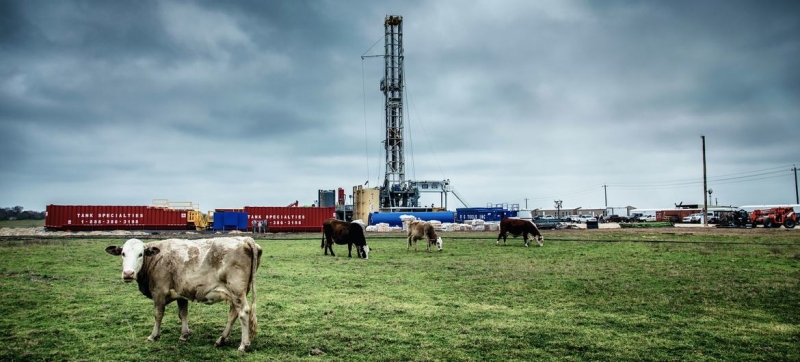
Cows graze near a drilling rig in Texas, USA. Methane emissions monitoring system proves effective, but action is needed to fix leaks Climate and Environment
A high-tech system for detecting large methane leaks has sent 1,200 alerts to governments and companies in the past two years, but only one percent of recipients have responded, according to the United Nations Environment Programme (UNEP).
Despite commitments under the Global Methane Agreement to cut emissions by 30 percent by 2030, the report “Methane in the Spotlight: Invisible but Not Unnoticed” highlights that the Methane Alert and Response System (MARS), part of UNEP’s International Methane Observatory, remains an untapped opportunity.
“Time to Act”
Atmospheric methane is the second-largest contributor to anthropogenic global warming after carbon dioxide (CO₂), with short-term impacts 80 times greater than CO₂. To limit global warming to 1.5 degrees Celsius, methane emissions must be reduced by 40-45 percent by 2030. However, the latest data shows that methane concentrations in the atmosphere have been growing at a record pace over the past five years.
Read also:
Greenhouse Gas Concentrations Reach New Record High in 2023
“To control global warming, methane emissions must be reduced, and they must be reduced quickly,” said Inger Andersen, UNEP Executive Director. “We now have a proven system for identifying major leaks that can be fixed quickly – sometimes with a simple repair. In other cases, the solution is literally a matter of tightening the bolts.”
“Governments and oil and gas companies must stop ignoring this problem when the solution is right in front of them. They must start plugging the methane leaks that are fueling global warming. The tools are in place, the targets are in place – it’s time to act,” Andersen added.
Proven effectiveness
Despite the need to respond more quickly to methane leaks, there are already examples of successful action by some countries and companies, demonstrating the value of the data the system provides. In 2024, the observatory recorded a reduction in emissions from large leaks in Azerbaijan and the United States.
In Algeria and Nigeria, the system’s alerts led to direct action by governments and oil and gas companies. In Algeria, where leaks had been occurring for years, the avoided emissions were equivalent to taking 500,000 cars off the road. In Nigeria, the leak lasted six months, releasing methane into the atmosphere equivalent to driving 400,000 cars for a year; The problem was resolved in less than two weeks by replacing the faulty equipment.
Reporting Standard
In addition to fixing large leaks visible from space, the industry has tools to manage methane emissions. Oil and Gas Methane Partnership 2.0 UNEP helps oil and gas companies measure and reduce methane emissions. Over the past year, 20 new members have joined the partnership, bringing the total to 140 companies, which together account for more than 40 percent of global production.
In 2024, the Oil and Gas Methane Partnership 2.0 awarded “gold standard reporting” status to companies providing high-quality data for the first time. To date, 55 companies have achieved this status. To effectively track progress on emission reduction commitments and targets, all companies in the sector need to adopt “gold standard reporting,” UNEP said.
New Initiatives
The International Methane Observatory has also launched the Eye on Methane data platform, which provides up-to-date, open-source data to improve transparency and accountability.
The Observatory is also stepping up its work on other sources of methane emissions, launching a new program for the steel industry. Methane emissions from metallurgical coal used in steel production account for an average of 30 percent of steel’s near-term climate footprint. These emissions can be reduced at a cost of less than one percent of the cost of steel. The monitoring system has been extended to support metallurgical coal production data to identify additional emission reduction opportunities.
